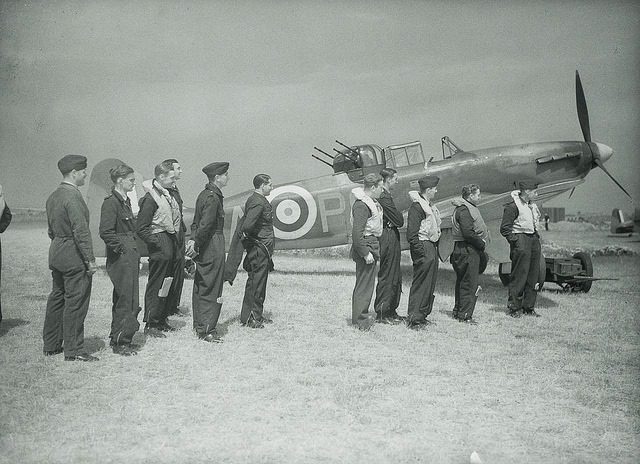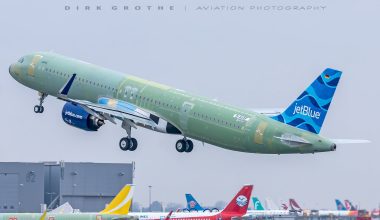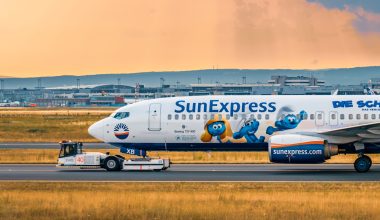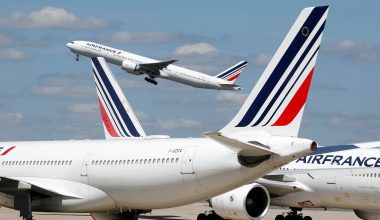The second world war which started on September 1st, 1939, after Hitler invaded Poland from the west. Two days after the breach of the Poland terrain, France and Britain declared war on Germany, beginning WW2. The battle of Britain pitted the Royal Air Force against the German Luftwaffe in a duel for air superiority over Southern England. The Britain WW2 planes that participated in the battle were some of the most iconic aircraft in aviation history.
Here is the list of iconic Britain WW2 planes that were used to turn the tide of the war.
1. Supermarine Spitfire

Designed by Reginald Mitchell, the Supermarine Spitfire was one of the most iconic Britain WW2 planes; this aircraft became the symbol of defense in the air for the Royal side. The aircraft had an all-metal airframe that made it light and formidable; although it took longer to build the aircraft than the Hurricane aircraft and was less sturdy, it was a fast aircraft and had a quick responsiveness feature which even impressed the pilots who flew it. The Supermarine Spitfire was a match for the Luftwaffe’s Messerschmitt Bf 109 and was superior to the aircraft at lower altitudes making it one of the dominant Britain WW2 planes. The aircraft entered the service with no. 19 Squadron at Duxford in August 1938, the production of the aircraft was slow at first, but by September 1940, the Supermarine Spitfire was in service with 18 RAF squadrons and shot down a total of 539 enemy planes and lost 230 during the WW2.
2. De Havilland DH.98 Mosquito
The de Havilland Mosquito aircraft is one of the most celebrated Britain WW2 planes. Although it is one of the most iconic aircraft for use by the British RAF, the Mosquito wasn’t initially designed for fighting. It was originally designed as a bomber aircraft but went on to become one of the most significant Britain WW2 planes for fighter lines; by the end of WW2, the aircraft also became one of the supreme air fighters of the conflict. The aircraft had a larger design for a fighter with a wingspan of over 54 feet and a total length of over 42 feet. From 1939 to 1945, the Mosquito was considered one of the most versatile twin-engine props and stayed in the service till the 1950s.
Also Read: British Aviation Industry Faces Uncertainty

During its reign, the de Havilland Mosquito adapted to many modifications, including fighter-bomber, long-range aircraft, long-range day fighter, long-range night fighter, photo-reconnaissance, low to high-level day and night bomber, mine later, military transport, and even pathfinder servicing the British RAF with great significance. During WW2, 6,700 de Havilland Mosquitos were delivered to the service, 27 variants of the original design of the aircraft were placed into service and went to serve the British homeland, continental Europe, and Russian front from Far East Asia, commencing many of the most significant operations in the air. The aircraft’s formidable range and load capabilities made it one of the most dominant forces of the British RAF, it could reach German sites, and ou distance most German night fighter aircraft with relative ease and was an exceptional plane in every qualifying sphere.
3. Hawker Hurricane

The Hawker Hurricane was the most numerous of the RAF Fighter Command’s Britain WW2 planes equipped 33 squadrons by September 1940. The aircraft had a traditional framework designed with wood and metal framework covered in fabric. Such design of the Hawker Hurricane was derived from the earlier biplane fighters and was essentially out of date besides the improvement introduced in the later dates. Nonetheless, the Hawker Hurricane aircraft were rugged and stable that could be maintained and repaired more easily than the Supermarine Spitfire. The limitation of the aircraft was that it was directed toward the bomber enemy aircraft when possible while the superior Supermarine aircraft dealt with the fighter escort part in the war. Despite not being the perfect beast in the air and having several shortcomings, the Hawke Hurricane aircraft are accounted for destroying 656 German aircraft during WW2 leading to the iconic list of Britain WW2 planes with more destruction to the German army than the Spitfire; also 404 of the aircraft were destroyed during the war.
4. Boulton Paul Defiant

The Boulton Paul Defiant was a two-seater fighter plane with four gun-power-operated turrets making it one of the deadly Britain WW2 planes. But, the aircraft didn’t have a forward-firing armament which meant that the Defiant couldn’t shoot down the enemy aircraft from behind; the aircraft was designed with the primary intention to be used as a bomber interceptor, but its turret fighter concept was outmoded, and the extra weight of the aircraft that added extra pilot made it sluggish in combat. During the early battles over Dunkirk, the Boulton Paul Defiant was proved very vulnerable to the conventional enemy fighters; the RAF Fighter Command only sent its two Defiant squadrons into the war, which turned out to be complete failures against the enemy\s Luftwaffe. So, due to the consequences, the Defiant aircraft didn’t participate in the war any further as a day fighter.
5. Westland Welkin
The Westland Welkin is another notable Britain WW2 plane designed with a twin-engine and heavy fighter set-up. The name of the aircraft ‘Welkin’ stands for ‘vault of heaven’; the aircraft was designed to protect against the anticipated threats of the German high altitude aircraft’s bombing on British soil. Westland Welkin was clearly a high elevation fighter plane designed to ward off attacks based on the increased production of the German monoplane reconnaissance bombers, such as Junker Ju 86P.

The aircraft found its strength and effectiveness via its 70 feet wingspan and high aspect wing ratio. The pilots could endure the operation in the aircraft with the limit of 45,000 feet by its high-pressure cockpit. As a caveat, Welkin’s pressurized cabin could only provide 24,000 feet psi at maximum elevation, so the pilots were required to wear flight oxygen and a high-altitude pressure suit. The aircraft was equipped with four Hispanic 20mm cannons mounted; Welkin’s guns were affixed to an underbelly tray to ease loading and minimize pilot blinding from muzzle flash.
Although the aircraft was a formidable weapon in the air from the British side, it did have few notable mistakes. During the initial production, the Welkin aircraft were powered by the Rolls Royce Peregrine engine, which was so underwhelming that it became problematic for the power climb; the engines were later replaced by the more powerful version of the Rolls Royce, Merlin Mk. 76/77. On top of that, the long and heavy wings caused significant aircraft drag at the higher altitudes and low flight envelope stability that resulted in a high incidence of stalls and shock stalls. The Westland Welkin was designed and constructed by the Westland Aircraft Company between 1942 to 1943. But, as the perceived German aircraft threat capable of high altitude bombing never materialized, only 77 of the Welkin aircraft were fully produced with an additional; 26 roller. The aircraft’s existence was only made known to the world at World War II, which ended in September 1945.
6. Gloster Meteor
Gloster Meteor aircraft is the first and only Allied jet fighter to see service as Britain WW2 planes; the aircraft was maintained with a very conventional body design, although its design included the newest propulsion system. The technology was still in its infancy period when it was instilled in the Gloster Meteor, which made the aircraft slightly faster than Britain’s piston Spitfire and was deemed difficult to fly for the RAF pilots. The propulsion technology also exhibited high fuel consumption, so the long-range mission was out of its expertise. In general, the Meteor aircraft were easy to handle except at high-speed dives where the aircraft could lose straight maneuverability, risking the pilot’s life. One of the advantages of including the Gloster Meteros in the Britain WW2 planes was that its maintenance requirements were much easier than its’ counterpart in the German force, the German Me 262. The aircraft’s engine required overhauling after 180 hours of operation, whereas the German counterpart Me 262 required overhauling after a mere ten hours, giving Britain’s RAF the upper hand in the airstrike.

Due to its high potential, the aircraft was both strength and weakness of the RAF, the services of the Gloster Meteor were limited to homeland defense and short-range bomber escorts, due to both aircraft’s high fuel consumption powerful performance which didn’t fit in the fleet of a long-range attack and also due to the fear of the German troop stealing the secrets of design of the Meteor if it was shot down in the long-range battle. The production timelines of the Meteor were delayed, so it didn’t take service until 1945, and only a few of the aircraft were built, approximately reaching the number of 210. By the time the aircraft was put in the RAF service, most of the air battle was off British soil; at the time of service, the aircraft was less imminent than when its designs began to overshadow the German Messerschmitt- ME 262. Although the Gloster Meteor may fall pale compared to other Britain WW2 planes, the aircraft has the prestigious honor of suffering zero enemy loss throughout its contribution to WW2.
.






